Choose friends like your foods
I find it helpful to think of friends as I would the foods that I consume regularly. It helps me consider people as friends (or not).
Most of us would find it easy to think of the food and drinks we consume along the lines of “healthy” and “enjoyable”:

For example, I would fill into this diagram as such:
- pak choi (vegetable): healthy and enjoyable
- eggs: healthy and enjoyable
- bread: unhealthy but enjoyable
- pudding: unhealthy and unenjoyable
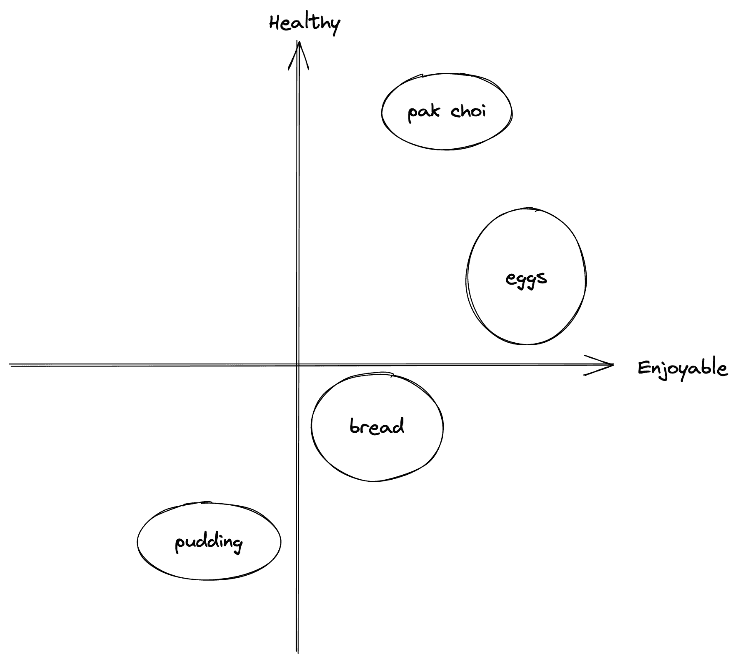
Cleaning it up a little and adding a few more foods and drinks, I’d arrive at a rough picture of what I consider to be healthy, unhealthy, enjoyable, and unenjoyable:
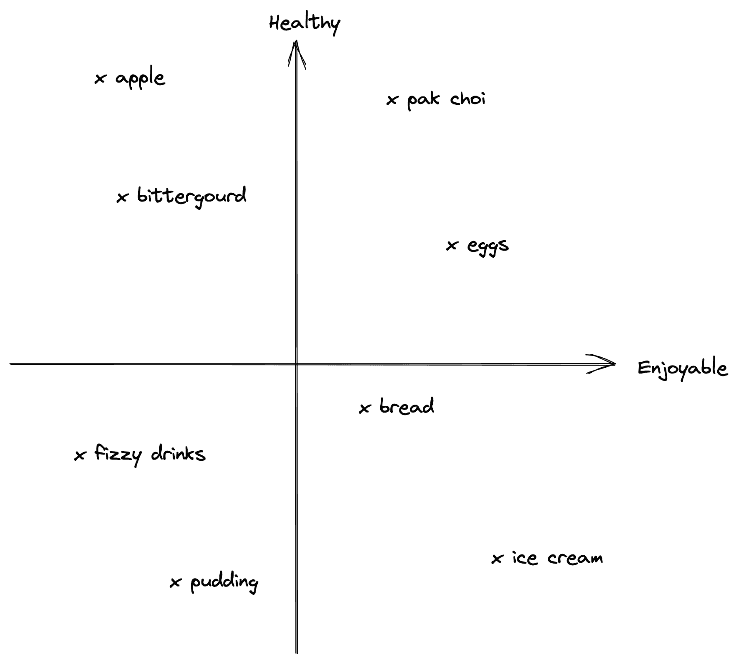
Now if I stop and look at the above diagram, I can’t help but formulate a mental model of which regions I should dwell in more often, and which regions I should avoid more often. So I colour-code each region:
- Healthy and Enjoyable (top right): green
- Healthy but Unenjoyable (top left): green
- Unhealthy but Enjoyable (bottom right): yellow
- Unhealthy and Unenjoyable (bottom left): red
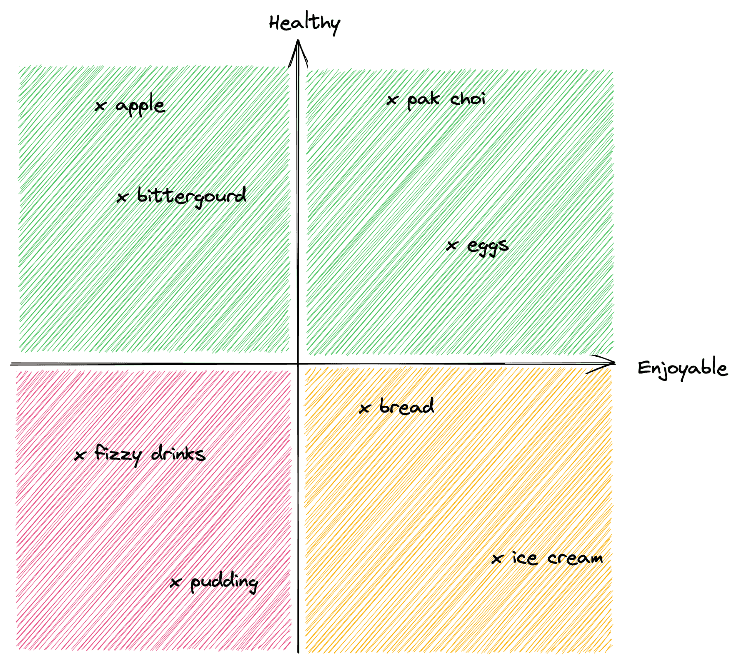
Healthy, enjoyable, unhealthy, unenjoyable — these could be rephrased for easier thinking:
- Healthy and Enjoyable -> Wholesome
- Healthy but Unenjoyable -> Necessary
- Unhealthy but Enjoyable -> Guilty pleasure
- Unhealthy and Unenjoyable -> Poisonous (figurative?)
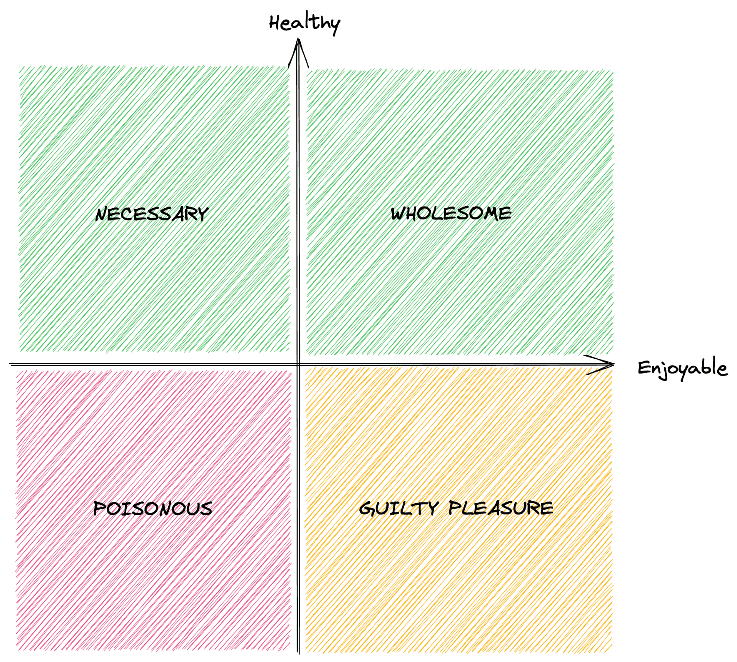
Looking at this generalised graph, I realise that it could be useful to think of my friends the same way as I think about food.
Friends are the family we choose, people say, and I agree. They’re as much a choice as foods are to us. Indeed I think most of us are probably more in a position to choose our friends than our foods.
Right, so I put friends on the graph:
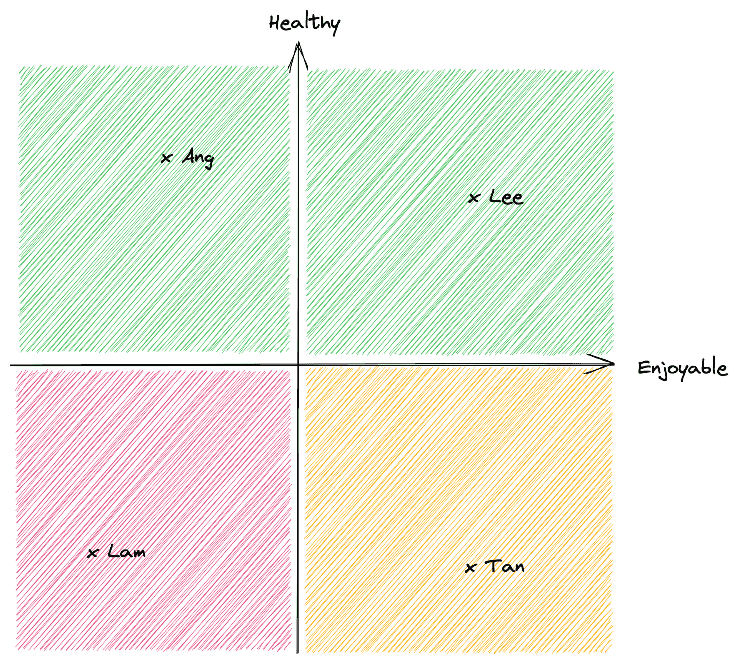
But the thing about evaluating people that is tricky is that people are a bundle of traits. I realise that I tend to evaluate people as “friends material” or not based on those traits, like:
- Honest <-> Dishonest
- Authentic <-> Fake
- True to self <-> In denial
- Resilient <-> Fragile
- Kind <-> Mean
- Mindful <-> Mindless
- Stoic <-> Frantic
- Selfless/Caring <-> Self-centered/Egotistic
- … so on
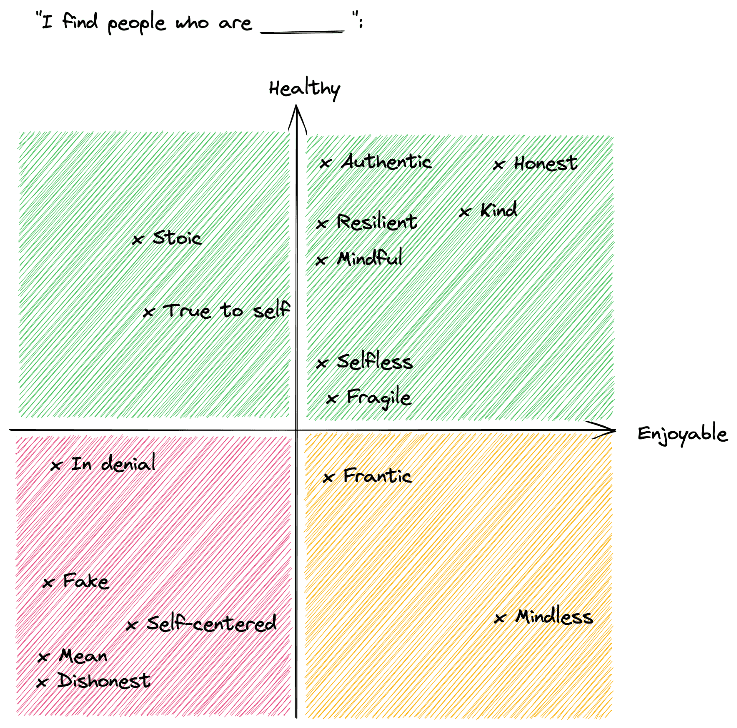
I could be more exhaustive when writing out the list of traits that I think of when I subconsciously evaluate people as friends. The longer the list, the richer the graph, the easier to think of people, and the better choices you’ll make when it comes to choosing friends.
Some friends are fun to be with and nourish you.
Some friends are no fun to be with but nourish you.
Some friends are no fun and bad for you.
Some friends are fun but bad for you.
What you decide to do with friends who are in the lower quadrants is up to you. For me, I usually cut them out of my life as soon it becomes obvious that they belong there. Harsh? Perhaps. But life is too short to be spent hanging out with people who are unenjoyable and unhealthy to be around. So, for me, I would rewrite the above sentences as:
Some friends are fun to be with and nourish you.
Some friends are no fun to be with but nourish you.
Some friends people are no fun and bad for you.
Some friends people are fun but bad for you.
And just like that, whoosh, people who were previously friends are now just people, broken from connecting to me, and free to make new connections. Just like foods and drinks that are happily consumed by others but not me. Not for me.
Note: I know friendship is more than what you get from people. I decided to put that aside from this post so that I can focus on building a mental model of how I see people as friends. The funny thing is, if you think about it, others probably see you (me) a certain way, too, and maybe this mental model helps us all to remember to do unto others as you would have them do unto you. Want a wholesome friend? Be a wholesome friend.
